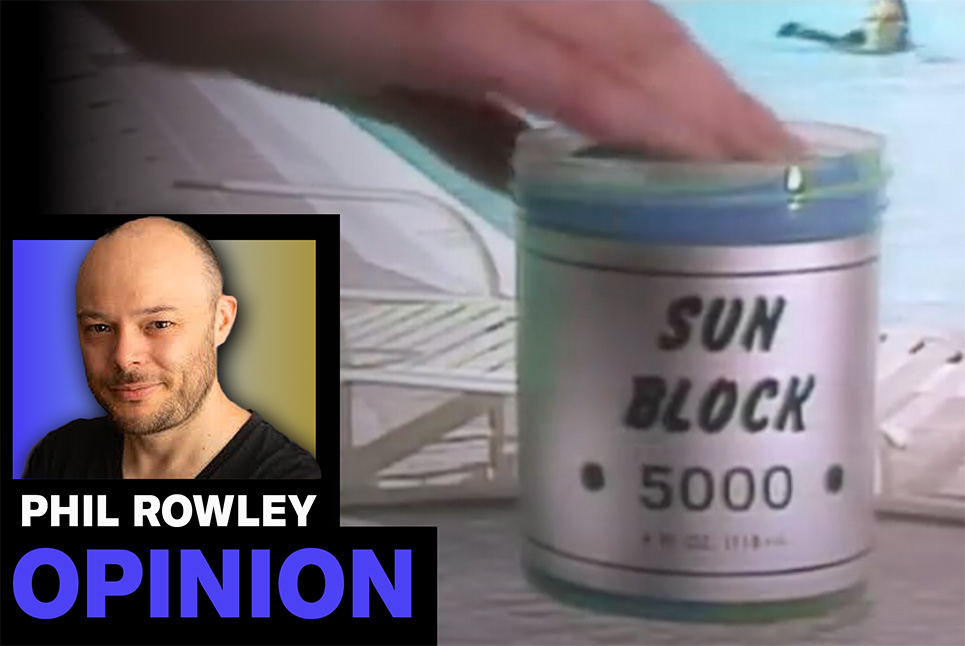From Blade Runner to RoboCop: What ads in sci-fi films say about tomorrow’s world

Opinion
Futuristic ads give us clues about what concerns consumers may have and what products may alleviate those concerns — as well as the power of brands.
Question: What do the following films all have in common? RoboCop. Blade Runner. Minority Report. Back to the Future Part II. Total Recall.
Answer: They all feature future forms of advertising.
In sci-fi, there’s a toolkit for depicting fictional futures. Usually flying cars, ultra-tall skyscrapers, holographic interfaces, angular clothing. And, of course, the near-ubiquitous AI.
But that toolkit is also swelled further by deploying another trope: sci-fi advertising.
Using fictional ads for imagined products and services seems to be a prerequisite of sci-fi “world-building”. Creators know futuristic commercials can tell us so much about humanity’s destiny — even more than hoverboards and tech-infused trench coats, maybe.
So, what can a fictional six-sheet from an imagined 2050 tell us about where humanity is headed? I think four things.
Future concerns
It’s safe to say that most creators expect capitalism to survive the next 100 years or so — and therefore consumerism too.
Unlike Star Trek’s future, which portrays a land of instant and limitless abundance, and where cash is thus rendered obsolete, the vast majority of sci-fi still predicts we will work for our money and we will exchange that money for solutions to our problems.
It’s not a leap to assume brands will exist and still be answering those future consumer need states. But what will those problems be?
The fake ads of RoboCop (1987) and RoboCop 2 (1990) drill down into this idea and provide some answers. In both films, the action is interrupted with “commercials” for: MagnaVolt, a device that lethally electrocutes car thieves; Sunblock 5000, a thick, luminescent gloop that must be applied to the skin before one can venture outside — “They say 30 seconds in the California sunshine is too much these days”; a premium healthcare clinic selling a selection of robotic hearts — with extended warranties and finance options, naturally.
In every case, the ads shine a spotlight on our fears for the future: a world where climate change is rampant, an ultra-draconian response to petty crime is perfectly moral and the rich buys better bodies.
Future choices
Futuristic advertising in sci-fi also forecasts the increasing commodification of everything. The idea that there is nothing that cannot be purchased, upgraded or augmented.
In Total Recall (1990), after seeing an ad for Rekall Incorporated, protagonist Douglas Quaid pays to have a fake memory placed inside his skull so he can vividly recall the experience of being an interplanetary spy without the expense or danger of ever having been one (…or had he?).
Whether buying a memory or a robotic heart, the ads in future fiction are telling us about the kinds of sophisticated consumer choices we may have to make. Yesterday, it was choosing pasta or rice for dinner; today, it’s deciding on a petrol vehicle or an electric car. But tomorrow it could be selecting a fake memory or customising our biology.
Our options may grow ever-more complex and our customisations ever-more refined.
Future partnerships
Sci-fi futures often also showcase advanced forms of media tech. From the shark holograms of Back to the Future Part II to ads addressing consumers by their name in Minority Report, films often portray a world where media is bigger, brighter and more in your face.
Crucially, seeing those fictional technologies used for advertising is a tacit acknowledgement that media innovations are often accelerated by brands.
Brands often react quickly to utilise new forms of interactivity, using it to reach audiences in new ways, take advantage of new consumer behaviours and position themselves as progressive and future-facing.
But, in doing so, they part-fund the further evolution of tech companies’ offering. That funding is then reinvested into yet more advanced forms of media and more innovative ad formats. It’s a cyclical relationship.
This is nothing new. Since the first newspaper ad in 1704 to the first TV ad in 1941 to Mark Zuckerberg’s 2012 purchase of Oculus Rift for $2bn thanks to Facebook’s significant revenue, many media platforms are in existence and continue to evolve because of the patronage of advertisers.
Advertising in futuristic scenes predicts this will continue to be so.
Future brands
Last, despite being set in the future, most of the films on this list feature cameos from real-life companies in existence today — a testament to the enduring power of brands.
In these worlds, while there are examples of product innovation, such as hoverboards and flying cars, we also see examples of pure branding plays — ads with nothing but logos and taglines.
In the original Blade Runner (1982), we see ads for Peugeot, Tsingtao beer and micro-electronics company TDK [back then it made cassette tapes; now microelectronics]. In the sequel, we see ads for Coca-Cola, Peugeot again and Johnnie Walker. In Minority Report, there are brand ads for Lexus and Guinness.
The assumption is that, first, pure brand advertising still works in the future; and second, certain brands will still be around in decades to come, such is their legacy and destiny. A real vote of confidence for the power of branding.
One important caveat, however. As a filmmaker, you may be caught out if those brands cease to exist in the intervening years. Also featured in Blade Runner are Atari and Pan Am — both long since bankrupt. The phenomenon of showcasing brands that later cease to be is called the “curse of Blade Runner“’.
What humans want
So what can a fictional six-sheet from 2050 tell us about where we’re headed?
Sci-fi advertising points to what consumers will worry about in the future and what products they may desire as a salve for those worries.
It also hints at what mass media will look like and acknowledges that brands will continue to fund the development of media technologies and we will receive integrated messaging in exchange.
Beyond the obvious sci-fi signifiers like whizzy transport, neon skyscrapers and leather jumpsuits, speculative advertising is just as effective at telling us who humans are and what humans want.
Or, perhaps more accurately, who we will be and what we will want.
 Phil Rowley is head of futures at Omnicom Media Group UK and the author of Hit the Switch: the Future of Sustainable Business. He writes a monthly column for The Media Leader about the future of media.
Phil Rowley is head of futures at Omnicom Media Group UK and the author of Hit the Switch: the Future of Sustainable Business. He writes a monthly column for The Media Leader about the future of media.
Read more

Make fewer ads: Why the future of advertising depends on better data strategies
There’s a misconception that planning fewer ads in order to reduce waste will lead to poorer results. But with intelligent modelling, strategic data partnerships and more metrics available, we can make ads more efficient and more effective.

À lire plus tard
Vous devez être inscrit pour ajouter cet article à votre liste de lecture
S'inscrire Déjà inscrit ? Connectez-vous








